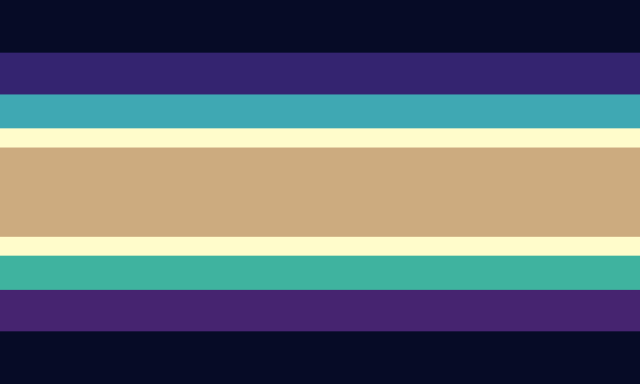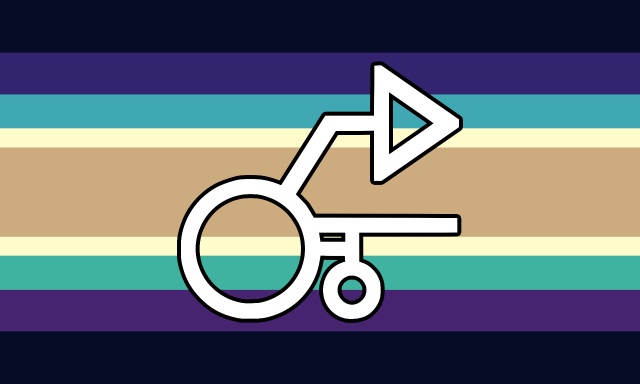#copinglink
So I was reading the transcript of @aestherians Othercon panel, which I found very well thought and thorough, but it kind of sparked a thought from my own experiences with ‘linking, which I thought I’d put in a separate post since I don’t want to clutter that one with vaguely related comments.
I find myself wondering if my approach to otherlinking is fundamentally different from other linkers, in that for me, involuntarity is the whole goal. A lot of the talk relating choice mentions people who started out with a lintype, and then it went out of their control and became involuntary, and so they now relate more to otherkin than otherlink. But personally, when I hear “this voluntary identity became involuntary” my instinctive reaction is that, uh, wasn’t that the point? I’m sure there’s a lot of linkers who came to this intending to make a voluntary identity they can easily drop if no longer needed, but personally I will only consider myself successful in this otherlinking stuff when I will stop having to reinforce my identity every five minutes and have it turn into something that’s just there.
(This may I feel be connected to how copinglinking is the most common form of linking, and a coping mechanism is usually something that one should be able to drop if it no longer works or is no longer useful. Creating a link for reasons other than coping is more rarely talked about, and the people who don’t link for coping may have different goals)
To put it bluntly, being otherkin is easy for me. I got this identity, it’s there, I didn’t have to work for it. But otherlinking is a lot effort. I’m someone who has a very hard time changing myself. I can’t pick habits or drop bad ones, I’m horrible at sticking to schedules, working on personality traits I want to change is hell. If I ever do manage to create an involuntary identity for myself, that’s something I’ll want to celebrate. Changing the way I identify from otherlinker to otherkin would feel like discarding all that effort. It’d be like invalidating myself, in a way.
Nothing against people who one day decide otherkin may be a better label for them, of course. Everyone has their own ways to interpret their identities and the right to use whatever language fits them better. I just find myself sort of on the fringe of this discussion and I don’t understand if I’m the only one here with different priorities.
Beings use the word “kinning” a lot and it kind of bothers me, and a lot of other otherkin and therians. Kin isn’t something you do, it’s what you are, you can’t choose it. In my opinion, “kinning” should be dropped and you should use these terms instead, as these have been accepted more widely and make much more sense than “kinnie” and other childish, unnecessarily quirky terms. There are three other words that sound much better!
|| SYNPATH || A being that an individual can relate to, but not identify AS. The relation can be for several reasons, such as sharing characteristics with a being or a concept that resonates with you. “My synpath is a wolf” is an example.
|| KITH || ANIMAL - HEARTED || OTHER - HEARTED || A being who has a strong connection with another being, but not quite identifying as it. They may experience shifts with their kithtype. “I am wolf-hearted” is an example.
|| COPINGLINK || A being who CHOOSES to identify AS a non-human being for fun or for a coping mechanism. This can be seen as a hobby or simply liking a different identity. Note it is still different than otherkin and therians as you CHOOSE to have a copinglink. “I have a wolf copinglink” is an example.

If your alterhuman identity is noncanon or an OC, that’s awesome! Just because you’re not canon doesn’t mean that you’re not real. Your experiences are real.
Fiction-identifying people with human or human-like identities are real, important and deserve to be able to talk about their experiences in the community. It’s not something that’s super common, but it’s still an important experience to talk about.
People who want to become nonhuman are valid in their experiences. Chosen nonhumanity is no lesser than identities you don’t choose.
If you’re not sure whether you’re otherkin, otherhearted, an otherlinker or something else, that’s okay! These identities are hard to figure out sometimes!
 ALT
ALT ALT
ALT ALT
ALTDysaltered
Dysaltered,or dysalt for short, is a term for disabled alterhumans, such as those who feel as though their disability impacts their alterhumanity or vice versa, those who are alterhuman due to disability, or otherwise has disability linked with alterhumanity in a sense. You can also spell it as disaltered or disalt.
Dysaltered people do not need to be any specific kind of alterhuman, nor any specific kind of origin or experience, to be dysaltered. Those who are alterhuman and disabled, but that are not impacted by each other, can still use this if they so choose.
As a concept or community, dysaltered focuses specifically on disabled inclusion, accommodation, and discussion within the alterhuman community. It may also focus on experiences only disabled alterhumans have, such as the impact of mobility aids.
This is an all-inclusive label in which many experiences under both the alterhuman and disabled umbrella may fit, and gatekeeping is strictly not okay. Any disabilities (physical, mental, etc.) are welcome, as are any diagnosis status.
This is NOT synonymous with “[origin] caused alterhumanity.” Any kind of alterhuman, spiritual, psychological, or otherwise, may be disabled, and thus may be dysaltered.
Flag, symbol, and description are by me, whereas the name suggestion was by the lovely @sunshinesolaic. Subterms, alternate flags and alternate symbols are welcome!
If you feel like you want to use this, but have a specific alterhuman identity and don’t feel comfortable simply using “alterhuman,” you’re welcome to use dys- as a prefix, like dyskin, dyshearted, dyslink, dystelic, etc.
Couple alternate flags below the cut.
 ALT
ALT ALT
ALT